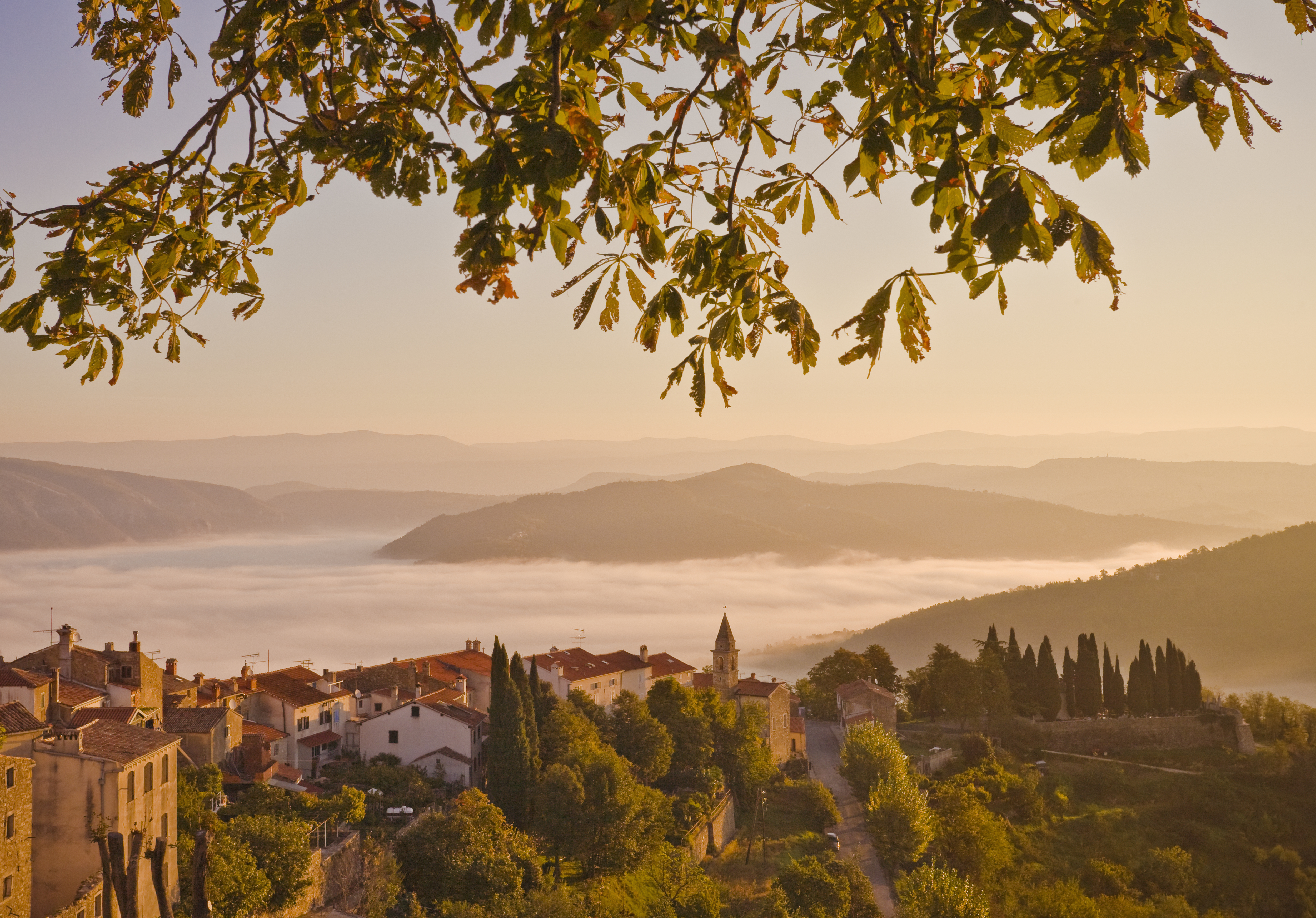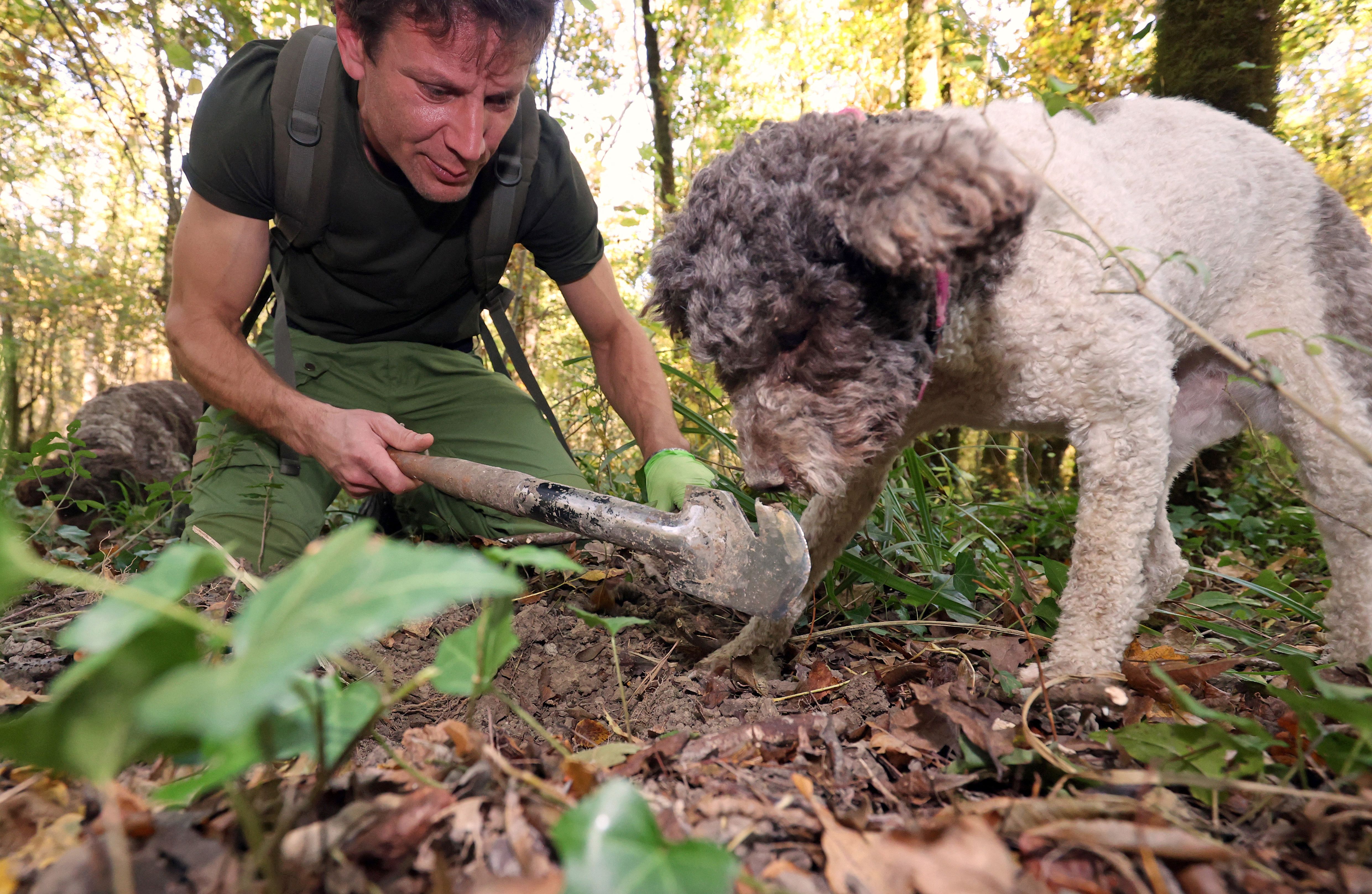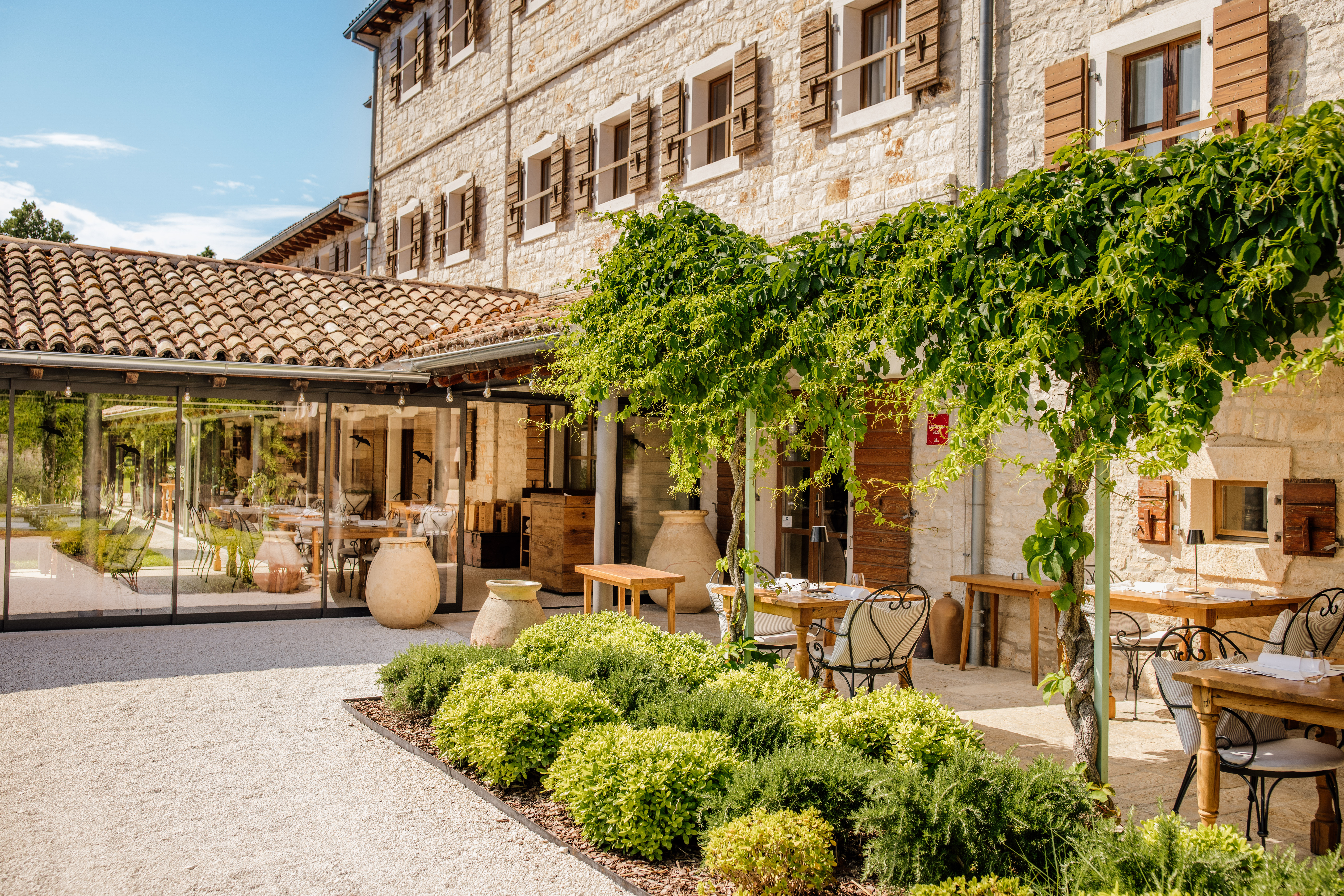'Truffle hunters are fiercely protective of their favoured spots, often passed down from older generations': The Croatian peninsula with a proud culinary tradition
Blessed with perfect growing conditions, Croatia’s abundant north-western peninsula promises rich pickings for gastronomes.

Armed with his slim otka spade and accompanied by two eager lagotto romagnolos, my Croatian companion Armin strides deep into the Forest of Motovun. The sun glints through a tangle of trees as we step over exposed roots, clinging onto branches for balance on the steep slopes. Wild asparagus season is approaching an end, its young edible shoots giving way to bristling spines, as the emergence of another fruit of the forest — the black summer truffle — gives Lily and Dalma reason to get excited. ‘This is our playground,’ says Armin, who grew up in the nearby truffle capital of Buzet, as the pair zigzags through the leaf litter ahead. ‘These dogs are calm and have a lovely energy, but when they enter the woods they are like beasts.’
In the wild, largely unpopulated heart of Croatia’s Istrian peninsula, this sprawling ancient forest is one of the world’s leading locations for truffles. Growing in symbiosis with oak, hornbeam and poplar roots, different forms of the prized fungi appear throughout the year releasing a scent when ripe that, with a keen canine nose and a slice of serendipity, reveals their location.

The sound of paws scurrying along the forest floor rustles through Croatia's northwestern woods, where the hunt for truffles is being threatened by climate change and deforestation, stirring fears that the country's gastronomic goldmine may be at risk.
Up ahead, Lily and Dalma suddenly divert up the slope and Armin sprints after them, providing words of encouragement as their frantic digging sends soil flying backwards. A nudge and a twist with the otka and our prize, a textured dark-brown fungus just over an inch in diameter, is gently extracted. ‘Now they need their paycheck,’ he says, reaching into his pocket for cookies, which Lily and Dalma devour as Armin explains how Istrian truffle hunters are fiercely protective of their favoured spots, often passed down from older generations.
Beyond the black summer and winter variants, the buzz here circulates around the prized Tuber magnatum pico, or white truffle, which — impossible to cultivate and only found in specific spots of Italy, Slovenia and Croatia — comes into season between September and December. Delicate in form and harder to detect, its intensity of scent and flavour explains why it commands up to €10,000 per kilogram — compared with €450 per kilo of black truffle.
Not that the white truffle’s value has always been obvious. With muddy boots discarded and the dogs rinsed and resting, we return to Karlić Tartufi, where third-generation truffle hunter Ivana Karlić grates our freshly scrubbed finds over buttery scrambled eggs, releasing their earthy, nutty aroma. For a long time, she explains, the region’s truffles were believed to be pungent potatoes, until, informed by in-the-know Italian migrants, locals realised the value of what grew on their forest floors. When the country was part of communist Yugoslavia, hunters weren’t allowed to build a business, so many truffles were smuggled over the border and sold as Italian. Since the 1980s — and aided by the discovery in 1999 of what, at the time, was the world’s largest white truffle — Istria’s truffle trade has boomed.
Shaped by the Roman Empire and the Republic of Venice, Istria has switched hands between Italy, Austria-Hungary and Yugoslavia in recent centuries, with its strong Italian influence visible across its language, landscapes and culture. As we zoom south from Motovun, forested slopes give way to rolling hills of olive groves and vineyards, making it easy to see why the region is often dubbed the Croatian Tuscany. With the vivid-blue Adriatic visible in flashes, we cross the Mirna River that Venetian shipbuilders used to transport oak from Motovun and stop off in the impossibly pretty town of Rovinj, where batana fishing boats bob in the harbour and cobbled streets lead to the hilltop church of St Euphemia.


The best Istrian dining destinations
This speciality seafood restaurant offers a dramatic spot for sundowners, on a rocky promontory that tumbles down into the sea at Monte Beach. Adriatic anchovies, octopus salad and grilled shrimps in garlic make compelling curtain raisers, before a lengthy list of malvazija wines and larger plates, including pljukanci pasta, freshly landed fish and truffled steaks, that place it among Rovinj’s most sought-after reservations.
Deep in Istria’s hills, this spot takes its name from local hero Giancarlo Zigante, a truffle hunter who landed a Guinness World Record after finding a white truffle weighing 1.31kg (almost 3lb) in 1999. Subsequently, he opened this specialist diner serving seasonal truffles, grated over timeless dishes, such as buttered homemade tagliatelle, polenta and mushrooms and seared steaks.
Tony’s Oyster Shack, Lim Fjord
Snaking 10km (about six miles) inland from the Adriatic, the brackish waters of the Lim Fjord provide fertile breeding grounds for shellfish. Sitting on stilts, this homely shack has been serving oysters for 20 years, with its owner also distributing to the region’s best restaurants. Although hours can be unpredictable outside of high season and its setting is certainly remote, the freshly shucked briny bivalves are a lesson in pared-back simplicity.
Weaving further south, past the olive-oil stronghold of Bale, I arrive at Meneghetti Wine Hotel & Winery (above), where the first-class produce has become a compelling calling card. Abandoned after the Second World War, this 19th-century estate has since been restored and extended, its sprawling vineyards and olive groves now accompanied by 58 handsome rooms and expansive residences scattered among its grounds. The 19th-century limestone farmhouse gleams in the light of golden hour as I climb the cypress-lined drive, as tractors rumble around the fields and swifts dart over-head. Yet for all its rustic charm, Meneghetti, which falls under the Relais & Châteaux umbrella, proves a seriously refined retreat.
A recent glow-up has added a sleek spa offering vinotherapy — using grape pulp for nourishing skin treatments — and a brand new winery and tasting room, where, before dinner, I head for a crash course in Istrian produce. Explaining how an iron-rich red soil and favourable climate kept cool by Adriatic breezes makes Istria a dream for growers, Meneghetti’s food and drink manager Domagoj Binder points out the parcels of Bordeaux-style grapes planted at the turn of the century before adding how another indigenous varietal has come to embody the region. ‘Malvazija arrived 2,000 years ago from ancient Greece and we took it as our own,’ he says. ‘In the past, we focused on very fresh expressions, but now more people are putting it in oak or on the lees, experimenting with early or late harvests — it’s very versatile and you can make a lot of excellent wines.’
So it proves at a tasting that shows Meneghetti’s full hand, journeying through the brioche notes of a super-dry blanc de blanc to malvazijas aged in Slavonian oak and a gutsy signature red blend. Alongside the wines, I’m poured a jewel-hued glass of Leccino olive oil. With olive-oil authority Flos Olei determining 69 of the world’s best 500 oils to have originated in Istria last year, the region’s liquid gold is no secret and, here, Meneghetti’s 600 trees produce 2,000 litres a year. Advised to cup the bottom of the glass, I warm the oil to release its aromas before sampling this subtle, slightly peppery liquid that enlivens Istria’s ricotta-like skuta cheese. Each of the estate’s four olive oils are made from single-varietal trees and I work up to the full-bodied Bjelica, the polyphenols of which pack strength and spiciness, as the team explains how opting for early harvests produces less oil, but can harness freshness and quality.
All of this proves a perfect primer for dinner at Meneghetti’s restaurant, which excels at creatively plated dishes that champion local ingredients. As the sun dips low in the sky, a succession of dishes starts to arrive. There’s asparagus, adorned with smoked egg yolk and sheep’s curd, a bisque-y sea urchin tonnarelli, grilled Adriatic sea bass with garden vegetables and a masterful millefeuille with bay-leaf ice cream — each intent on shedding new light on this often understated region that lets its outstanding produce do the talking.
Rooms at Meneghetti start from £210 per night on a bed-and-breakfast basis; visit the website for more information or to book
This feature originally appeared in the August 6, 2025, issue of Country Life. Click here for more information on how to subscrib

